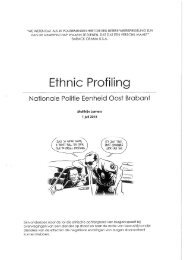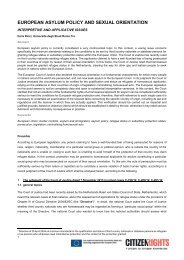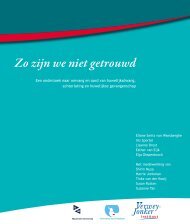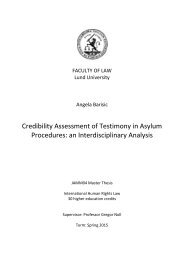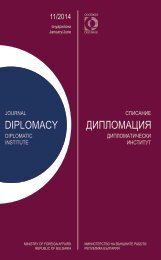AEMI
AEMI-2016-web
AEMI-2016-web
Create successful ePaper yourself
Turn your PDF publications into a flip-book with our unique Google optimized e-Paper software.
ELISA GOSSO<br />
References<br />
Barth F., Introduction, in Barth F. (ed.) Ethnic groups<br />
and boundaries. The social organization of culture<br />
difference, Oslo, Universitetsforlaget, 1969: 9-38.<br />
Che D., Reinventing Tulip Time: Evolving Diasporic<br />
Dutch Heritage Celebration in Holland (Michigan),<br />
in Coles T., Timothy D. J. (ed.), Tourism, Diasporas<br />
and Space, London-New York, Routledge,<br />
2004: 261-77.<br />
Cohen R., Global Diaspora: An Introduction, London-New<br />
York, Routledge, 2008.<br />
De Lange A., Schneider M., Tron D., Desel J., Köhler<br />
B., Ehmer H., Langner B. (eds.), Dreihundert<br />
Jahre Waldenser in Deutschland 1699-1999: Herkunft<br />
und Geschichte, Karlsruhe, Evangelischer<br />
Pressverband für Baden, 1999.<br />
Duval T. D., Conceptualizing Return Visits: A Transnational<br />
Perspective, in Coles T., Timothy D. J. (eds.),<br />
Tourism, Diasporas and Space, London-New<br />
York, Routledge, 2004: 50-61.<br />
Geymonat R., El templo y la escuela. Los valdenses en el<br />
Uruguay, Montevideo, OBSUR, 1994.<br />
Gosso E., Il passato è una valle straniera. Continuità<br />
e discontinuità nei processi di patrimonializzazione<br />
fra le valli valdesi e i contesti valdesi transnazionali,<br />
in Porcellana V., Gretter A., Zanini R. C. (eds.),<br />
Alpi in mutamento. Continuità e discontinuità nella<br />
trasmissione delle risorse in area alpina, Alessandria,<br />
Edizioni dell’Orso, 2015: 35-56.<br />
Köhler B., Dreihundert Jahre Waldenserkolonie Rohrbach-Wembach-Hahn:<br />
Herkunft und Geschichte<br />
ihrer Bewohner, Ober-Ramstadt, Verein für Heimatgeschichte<br />
e.V., 1999.<br />
Lowenthal D., The Past is a Foreign Country, Cambridge,<br />
Cambridge University Press, 1985.<br />
Lowenthal D., The Heritage Crusade and the Spoils of<br />
History, Cambridge, Cambridge University Press,<br />
1998.<br />
Peyrot B., La roccia dove Dio chiama. Viaggio nella memoria<br />
valdese fra oralità e scrittura, Sala Bolognese,<br />
Arnaldo Forni Editore, 1990.<br />
Timothy D. J., Genealogical Mobility: Tourism and<br />
the Search for a Personal Past, in Timothy D. J.,<br />
Guelke J. (eds.), Geography and Genealogy. Locating<br />
Personal Pasts, Aldershot, Ashgate, 2008:<br />
115-135.<br />
Tourn G., The Waldensians. The first 800 years (1174-<br />
1974), Turin, Claudiana, 1980.<br />
Tuan Y. F., Topophilia: A Study of Environmental Perception,<br />
Attitudes and Values, Englewood Cliffs,<br />
Prentice Hall, 1974.<br />
Watts G. B., The Waldenses in the New World, Durham,<br />
Duke University Press, 1941.<br />
209<br />
Notes<br />
1 Doctorate in Psychological, Anthropological and<br />
Educational Sciences, Doctoral School in Human<br />
and Social Sciences, University of Turin.<br />
2 Ethnographic fieldwork was conducted in the<br />
Waldensian community of Rohrbach-Wembach-Hahn<br />
in Germany, the Waldensian Presbyterian<br />
Church of Valdese, North Carolina, USA,<br />
the Cardon Families Organization of the United<br />
States and the Waldensian Church of the River<br />
Plate in Uruguay and Argentina (Gosso 2015). In<br />
this paper I focus on the case of Rohrbach-Wembach-Hahn.<br />
3 Web site: http://www.waldenser.de.<br />
4 It is the confirmation of the baptism received from<br />
children, that establishes the entry into the community<br />
of the church members.<br />
5 The motto of the village, written on a bronze<br />
plaque situated in the central square of Rohrbach,<br />
declaims: Den Vätern zum treuen Gedenken, den<br />
Kindern zur steten Erinnerung, that means ‘To the<br />
Fathers, for a faithful thought. To the Children,<br />
for a constant memory’.<br />
6 A lighted candelabrum surrounded by seven stars<br />
with the motto Lux lucet in tenebris, ‘Light shines<br />
in the darkness’.<br />
7 The costume consists of an ankle-length dress,<br />
usually dark blue, black or purple. Around the<br />
waist a silky and colored apron is tied with long<br />
ribbons. On the shoulders it is used to wear a<br />
white or black shawl, with long fringes and floral<br />
embroidery on the back. The most characteristic<br />
element of the Waldensian costume is the precious<br />
bonnet, usually white for adults and black for the<br />
girls who are not yet confirmed.<br />
8 In Barth’s analysis, ‘diacritics’ are parameters that<br />
the members of a group develop in order to found<br />
a feeling of internal unity and to distinguish from<br />
the others.




